Capitalizing on R‑32 Refrigerant: Benefits for HVAC Professionals
As the HVAC industry evolves, professionals are increasingly recognizing the potential of R‑32 refrigerant. With its low global warming potential (GWP) and efficient performance, R‑32 is gaining traction as a sustainable option for heating, ventilation, and air conditioning systems. By adopting R‑32, HVAC pros can position themselves advantageously in a competitive market while actively participating in environmental stewardship.
Understanding R‑32 Refrigerant
R‑32 is a hydrofluorocarbon (HFC) refrigerant that belongs to the family of fluorinated gases. It is notable for its low GWP, which is approximately one-third that of R‑410A, a commonly used refrigerant in air conditioning units. This characteristic makes R‑32 a prime candidate for compliance with environmental regulations aimed at reducing greenhouse gas emissions.
Advantages of R‑32 for HVAC Professionals
Embracing R‑32 offers multiple benefits for HVAC professionals, enhancing both their service offerings and customer satisfaction. Here are some of the key advantages:
- Energy Efficiency: R‑32 has superior thermodynamic properties, allowing systems to operate more efficiently. This results in lower energy consumption and reduced electricity bills for customers.
- Lower GWP: With a GWP of 675, R‑32 is far more environmentally friendly than its predecessors. This compliance with international environmental protocols is a strong selling point for eco-conscious homeowners.
- Cost-Effective: Due to its enhanced efficiency, systems using R‑32 often require less refrigerant volume. This not only lowers initial costs but can also mean less frequent maintenance and refills over time.
- Improved Performance: R‑32 provides better cooling performance in higher ambient temperatures, making it ideal for warmer climates.
- Simplified Installation: R‑32 has similar properties to R‑410A, allowing many technicians to transition to this refrigerant with minimal additional training. This familiarity can speed up project timelines and reduce labor costs.
Adapting to R‑32: Training and Certification
While R‑32 offers significant benefits, HVAC professionals must prepare for its adoption through proper training and certification. Understanding the unique handling and installation procedures for R‑32 is crucial for maximizing its potential and ensuring safety. Programs that focus on working with low-GWP refrigerants can help technicians become certified for R‑32 installations.
Check out AHR Expo for resources and training sessions related to R‑32 refrigerant and HVAC best practices.
Market Trends: Increasing Demand for Low-GWP Refrigerants
As climate change becomes more prominent in global discussions, demand for environmentally friendly refrigerants continues to grow. Many countries are enacting bans on high-GWP refrigerants, making the shift to alternatives like R‑32 not just preferable but necessary.
According to recent market research, the adoption rate of R‑32 refrigerant is expected to increase by 15% yearly in the coming decade. HVAC professionals who invest in R‑32 training now will likely find themselves in demand as more manufacturers and customers seek low-GWP solutions.
Customer Benefits: Why Homeowners Prefer R‑32
Consumers are becoming increasingly aware of their environmental impact and are often on the lookout for energy-efficient products. Here are some compelling reasons why homeowners are drawn to systems utilizing R‑32:
- Lower Carbon Footprint: Homeowners appreciate the reduced environmental impact associated with R‑32 systems.
- Reduced Utility Bills: With enhanced energy efficiency, customers enjoy lower electricity bills over time, offsetting initial costs.
- Longer Lifespan: Efficient systems often lead to less wear and tear, increasing the lifespan of HVAC equipment.
The Future of HVAC: R‑32 in Emerging Technologies
As technology continues to advance, the use of R‑32 is expected to expand beyond traditional HVAC applications. Innovations in heat pumps, refrigeration, and chillers that utilize R‑32 can create even more opportunities in the market. HVAC professionals have a unique opportunity to lead the way in adopting these forward-thinking technologies.
For ongoing updates and deeper insights into the future of HVAC and R‑32 refrigerant, refer to ASHRAE, an organization dedicated to advancing HVAC standards and practices.
Capitalizing on R‑32 refrigerant presents HVAC professionals with a unique opportunity to meet market demand while contributing to environmental sustainability. By embracing R‑32, you can enhance your service offerings, improve customer satisfaction, and position your business for future growth.
Understanding the Low-GWP Factor: Why It Matters
Understanding the low-global warming potential (Low-GWP) factor is essential for anyone in the HVAC industry. It relates directly to the refrigerants we use and how they impact our environment. More than ever, professionals need to be aware of the benefits of adopting Low-GWP refrigerants like R-32. Transitioning to these refrigerants not only helps in reducing the negative effects of climate change but also presents a unique opportunity for growth and innovation in the HVAC market.
Low-GWP refrigerants contribute to a significant reduction in greenhouse gas emissions. Here’s why it’s vital:
- Environmental Responsibility: Using Low-GWP refrigerants helps the HVAC industry comply with international agreements aimed at reducing greenhouse gases. By opting for Low-GWP solutions, you can align your business with global sustainability initiatives.
- Regulatory Compliance: With increasing regulations surrounding hydrofluorocarbons (HFCs), adopting Low-GWP refrigerants ensures that your business is prepared for future legal frameworks while also avoiding potential fines.
- Market Demand: Consumers and businesses are becoming more environmentally conscious. By offering HVAC solutions that utilize Low-GWP refrigerants, you can attract a broader customer base that prioritizes sustainability.
- Innovation and Efficiency: Many Low-GWP refrigerants, like R-32, are not only more eco-friendly but also provide better energy efficiency. This translates to lower energy bills for customers and reduced wear and tear on equipment.
When it comes to R-32 specifically, its advantages are noteworthy. R-32 has a GWP of 675, making it significantly less damaging to the environment compared to traditional refrigerants like R-410A, which has a GWP of 2088. This reduction in GWP means less environmental harm while still providing effective cooling solutions.
HVAC professionals should note how R-32 operates efficiently. Here’s a quick comparison of R-32 and R-410A:
| Property | R-32 | R-410A |
|---|---|---|
| Global Warming Potential (GWP) | 675 | 2088 |
| Energy Efficiency | Higher | Lower |
| Ozone Depletion Potential (ODP) | 0 | 0 |
As shown, R-32 is a superior choice in terms of both environmental impact and efficiency. Its higher energy efficiency means lower operational costs and a longer lifespan for the HVAC systems that use it.
Shifting to Low-GWP refrigerants doesn’t just protect the planet; it also positions your business as a leader in an evolving market. Here are some practical steps to embrace this change:
- Educate Yourself and Your Team: Stay updated on the latest trends in Low-GWP refrigerants. Training sessions or workshops can help your team understand the benefits and applications of these products.
- Update Your Inventory: Transition from high-GWP refrigerants to Low-GWP options like R-32 in your offerings. This shows customers that you are committed to sustainability.
- Market the Change: Share your green initiatives through social media and your website. Highlight how using Low-GWP refrigerants benefits your customers and the environment.
- Partner with Suppliers: Collaborate with manufacturers who prioritize Low-GWP refrigerants. Ensuring a reliable supply chain will make the transition smoother.
Implementing Low-GWP refrigerants isn’t just an environmental choice; it’s a smart business strategy for HVAC professionals. Now is the time to make a change that aligns with global sustainability goals while also being beneficial for your business and customers.
By focusing on Low-GWP solutions like R-32, you’re not only enhancing your business’s competitive edge but also playing a vital role in mitigating climate change. For more information on Low-GWP refrigerants and the impact on HVAC systems, check out EPA’s SNAP Program and AHRI’s resources. These platforms provide in-depth data and guidance on refrigerant options available for your needs.
Embrace the change towards Low-GWP refrigerants and secure a sustainable future in the HVAC industry today!
Comparing R‑32 with Traditional Refrigerants
When it comes to refrigerants, understanding the differences between newer options like R‑32 and traditional refrigerants is crucial for HVAC professionals. This knowledge not only influences system efficiency but also impacts environmental responsibilities. R‑32, a hydrofluorocarbon (HFC), is gaining traction for its lower Global Warming Potential (GWP), which is significantly more advantageous than conventional refrigerants such as R-410A and R-22.
R‑32 has a GWP of 675, which is about one-third of the GWP of R‑410A (2088) and much lower than R-22 (approximately 1700). This dramatic reduction in GWP allows HVAC pros to offer solutions that meet modern environmental standards while providing efficient cooling. The significance of GWP cannot be overstated, especially as regulations become stricter.
Energy Efficiency
Energy efficiency is another critical differentiator. R‑32 offers better heat transfer capabilities compared to traditional refrigerants, which means HVAC systems can operate at a higher efficiency. Here’s why:
- Higher Efficiency Ratio: R‑32 typically showcases a higher Seasonal Energy Efficiency Ratio (SEER) compared to R‑410A, leading to reduced energy bills for consumers.
- Less Refrigerant Required: Systems using R‑32 usually require less refrigerant, which can lower the overall system cost and installation time.
- Improved System Performance: R‑32 maintains its properties better in higher temperatures, ensuring consistent performance.
Ease of Handling
R‑32 is known for being easier to manage in comparison to traditional refrigerants. Here are some key factors:
- Single Component: R‑32 is a single-component refrigerant, unlike blends such as R‑410A. This simplifies the charging process and reduces the risk of incorrect mixture when refilling.
- Lower Flammability Risk: While all refrigerants have some level of flammability, R‑32 falls under the mildly flammable category (A2L), which, when used properly, poses minimal risk in comparison to other types.
- Less Toxic: R‑32 is less toxic than unitary refrigerants and poses less risk to consumers and technicians.
Comparative Overview of Refrigerants
| Property | R‑32 | R‑410A | R-22 |
|---|---|---|---|
| GWP | 675 | 2088 | 1700 |
| Energy Efficiency Rating (SEER) | Higher | Medium | Lower |
| Flammability | Mildly Flammable (A2L) | Non-flammable (A1) | Non-flammable (A1) |
| Toxicity | Low | Low | Medium |
Environmental Impact
As environmental concerns continue to rise, HVAC professionals must prioritize refrigerants with lower greenhouse gas emissions. R‑32’s reduced GWP signifies an important step towards sustainability, which is crucial in aligning with regulations like the Kigali Amendment. This amendment aims to phase down substances that deplete the ozone layer and mitigate climate change. Businesses that adopt R‑32 can enhance their reputation as environmentally conscious, potentially attracting new clients concerned with sustainability.
Market Trends and Adoption
The HVAC industry is witnessing a shift towards R‑32, particularly in markets that are proactive in implementing eco-friendly solutions. Many manufacturers are increasingly developing R‑32-compatible units, ensuring that HVAC pros will have better options for installations and retrofitting existing systems. Adoption of R‑32 is projected to rise, and forward-thinking HVAC contractors should familiarize themselves with this refrigerant’s benefits to maintain a competitive edge.
Comparing R‑32 with traditional refrigerants reveals significant advantages in energy efficiency, handling, and environmental impact. HVAC professionals who capitalize on R‑32 will not only benefit their customers with lower energy costs but also contribute positively to the global environment. To stay updated about refrigerant trends and industry news, visit AHR Expo or ASHRAE.
R‑32 Implementation: Challenges and Solutions
As the HVAC industry moves towards more environmentally friendly solutions, R-32 refrigerant is increasingly being adopted as a low-global warming potential (GWP) option. While it offers a range of benefits, including improved energy efficiency and reduced environmental impact, the implementation of R-32 is not without its challenges. Understanding these hurdles and knowing how to overcome them is essential for HVAC professionals who want to stay ahead in this evolving landscape.
Understanding the Challenges of R-32 Implementation
Transitioning to R-32 can lead to various challenges, which HVAC professionals must address to ensure a smooth implementation.
- Safety Concerns: Although R-32 is safer than some high-GWP refrigerants, it is classified as mildly flammable. Technicians must be adequately trained to handle this substance and understand its properties to minimize risks during equipment installation and maintenance.
- Equipment Suitability: Not all existing HVAC systems are designed to take R-32. It’s crucial to evaluate whether current systems can be retrofitted, which would often require additional components or entirely new systems.
- Regulatory Compliance: With varying regulations surrounding refrigerant use, staying compliant is critical. HVAC professionals need to familiarize themselves with local, state, and federal laws regulating R-32 to avoid penalties.
- Cost Implications: The initial cost of R-32 appliances may be higher compared to traditional refrigerants. However, long-term savings through energy efficiency can offset these costs.
Solutions to Implementing R-32 Effectively
To help navigate these challenges, HVAC professionals can adopt various strategies for a successful transition to R-32.
- Training and Certification: Ensure that all staff are trained on the properties, handling, and safety measures related to R-32. Look for certified training programs from organizations like [HVAC Excellence](https://www.hvacexcellence.org) that focus on modern refrigerants.
- Evaluation of Existing Equipment: Before making a switch, perform a thorough evaluation of current systems. Determine which can be retrofitted and which may necessitate a total replacement.
- Stay Updated on Regulations: Regularly review the evolving regulations surrounding refrigerants. Keeping informed through resources like the [US Environmental Protection Agency](https://www.epa.gov) can help maintain compliance.
- Cost-Benefit Analysis: Conduct a comprehensive cost-benefit analysis to highlight the long-term savings brought by improved energy efficiency. This analysis will help in making informed decisions regarding upfront investments.
Environmental Impact of R-32
The use of R-32 presents a significant advantage in terms of environmental impact. It has a GWP of only 675, which is considerably lower than many commonly used refrigerants like R-410A. This reduction in GWP makes R-32 a more eco-friendly option, aligning with global efforts to combat climate change.
| Refrigerant | GWP | Flammability |
|---|---|---|
| R-32 | 675 | Mildly Flammable |
| R-410A | 2088 | Not Flammable |
| R-134A | 1430 | Not Flammable |
R-32 into HVAC systems not only helps mitigate climate change but also positions HVAC businesses as leaders in sustainability. Professionals who understand the importance of this transition can provide better services to their clients, leading to enhanced customer satisfaction.
While R-32 implementation poses challenges, which include safety concerns, equipment suitability, compliance, and costs, these can be effectively managed. Training, evaluation, regulatory knowledge, and cost-benefit analyses are key strategies to address these challenges. As HVAC professionals, being proactive and knowledgeable about these aspects can pave the way for a successful transition to a more sustainable future.
For more information about R-32 refrigerant and its applications, visit HVACR or explore ASHRAE for detailed guides and resources on modern refrigerants.
The Future of HVAC: Trends in Refrigerant Technology
As the HVAC industry continues to evolve, advancements in refrigerant technology play a crucial role in shaping its future. One significant trend is the shift toward low global warming potential (GWP) refrigerants. This movement aligns with global sustainability goals and aims to reduce the environmental impact of heating and cooling systems.
Emerging Low-GWP Refrigerants
The industry is witnessing a gradual transition to refrigerants with lower GWP ratings. These alternatives not only comply with new regulations but also meet consumer demand for eco-friendly solutions. Some notable examples of low-GWP refrigerants include:
- R-32: A single-component refrigerant with a GWP of 675.
- R-454B: A blend with a GWP of 466.
- R-1234yf: A low GWP option widely used in automotive air conditioning.
These refrigerants are becoming popular choices among HVAC professionals looking to reduce their overall carbon footprints while maintaining high efficiency in heating and cooling systems.
Regulatory Landscape
Policy changes and environmental regulations are pushing the HVAC industry toward more sustainable refrigerant options. The phase-down of hydrofluorocarbons (HFCs) under the Kigali Amendment is one such initiative. This international treaty aims to reduce the production and consumption of HFCs that contribute significantly to global warming. These changes prompt HVAC professionals to adapt to new refrigerant models to comply with regulatory standards.
Investment in R&D
Research and development (R&D) is crucial for the continued growth of HVAC refrigerant technology. Companies are investing in the exploration of new chemical compounds that offer enhanced efficiency and lower environmental impact. Some key focus areas include:
- Innovative refrigeration cycles that maximize energy efficiency.
- Advanced materials for heat exchangers that improve thermal performance.
- Refrigerants that incorporate natural elements like hydrocarbons, which offer lower GWP.
By prioritizing R&D, manufacturers can deliver improved refrigerant options tailored to meet both efficiency and environmental goals.
Training and Certification
As HVAC professionals switch to low-GWP refrigerants like R-32, proper training is essential. Contractors and technicians need to understand the handling, installation, and maintenance of these new refrigerants to ensure safety and compliance. Several certification programs are available, focusing specifically on:
- Safe handling practices for flammable refrigerants.
- Understanding the thermodynamic properties of low-GWP options.
- Regulations concerning refrigerant management and recovery.
Investing in ongoing training helps HVAC pros stay competitive while ensuring they deliver safe and effective services.
Consumer Awareness
Consumer education is another critical aspect of refrigerant technology trends. As homeowners become more aware of energy-efficient heating and cooling options, they are likely to seek out HVAC systems that utilize low-GWP refrigerants. Here are strategies to engage consumers:
- Provide informational resources about the benefits of low-GWP refrigerants.
- Highlight energy savings and environmental impacts associated with modern systems.
- Encourage energy audits to help consumers understand their specific needs.
By creating awareness, HVAC professionals can position themselves as trusted advisors in sustainable energy solutions.
The Future of HVAC Technology
The HVAC landscape is rapidly changing, with low-GWP refrigerants leading the way toward more environmentally conscious solutions. HVAC professionals who adapt to these advancements not only stay compliant with regulations but also cater to an increasingly eco-aware consumer base. Keeping up with emerging technologies will ensure sustained success in an evolving market.
For more insights on HVAC refrigerant trends, you can check out AHRI and Ezone.
Customer Awareness: Educating Clients on R‑32 Refrigerant
In today’s evolving HVAC landscape, understanding the new refrigerants available, like R-32, is vital for homeowners. R-32 is rapidly gaining attention due to its low global warming potential (GWP) and efficiency benefits. Educating clients about these advantages can empower them to make informed choices and lead to better installations.
A key feature of R-32 is its lower GWP compared to traditional refrigerants like R-410A. While R-410A has a GWP of 2088, R-32 comes in significantly lower at around 675. This lower GWP means that R-32 has a far smaller impact on climate change, making it a more environmentally friendly option for cooling systems. By sharing this information, you help your clients understand how their choice of refrigerant contributes to global sustainability efforts.
Here are some important points to discuss with your clients regarding R-32 refrigerant:
- Efficiency: R-32 systems are designed to operate more efficiently. They require less energy for cooling, which translates to lower utility bills. Educating clients on how this efficiency can save them money over time makes a compelling argument for switching to R-32.
- Environmentally Friendly: The lower GWP means that if an R-32 system leaks, it is less harmful to the environment compared to systems using other refrigerants. Emphasizing the benefits of choosing a safer option can resonate with environmentally conscious clients.
- Improved Performance: R-32 has excellent thermodynamic properties that help in better heat transfer. This results in improved cooling performance, which clients will appreciate during hot summer months. Highlighting these technical advantages can help in persuading clients of R-32’s merits.
- Future-Proofing: Regulatory trends favor low-GWP refrigerants. As environmental regulations tighten in many regions, shifting to R-32 can help clients avoid the obsolescence of their equipment.
It’s also important to address safety concerns that often come up with refrigerant discussions. While R-32 is mildly flammable, its properties are well understood and managed in high-quality systems. Ensure clients know that responsible handling and proper installation by trained professionals significantly mitigate any risks. You can reassure them that reputable HVAC professionals prioritize safety and are skilled in working with R-32.
Offering informational sessions can be beneficial. You might consider workshops to educate not just your clients, but also your sales team about R-32’s benefits. This creates a knowledgeable sales environment where clients feel confident in their choices. Sharing articles and materials from credible sources, such as the Air-Conditioning, Heating, and Refrigeration Institute (AHRI), can provide further depth to your discussions.
| Refrigerant Type | GWP | Characteristics |
|---|---|---|
| R-410A | 2088 | Higher energy consumption, potential environmental issue |
| R-32 | 675 | Lower energy consumption, environmentally friendly |
Clients should also understand the correct maintenance practices for R-32 systems. Emphasizing routine inspections can help them ensure their systems function efficiently, which maintains both comfort and cost-effectiveness. Consider providing a checklist that covers seasonal maintenance tasks clients can perform or schedule. This proactive approach can strengthen their trust in your expertise and enhance customer satisfaction.
Ultimately, being proactive about sharing knowledge surrounding R-32 will not only help your clients make informed decisions but can also position your business as a leader in environmentally conscious HVAC practices. Educating clients on refrigerants should be part of your overall strategy to enhance customer engagement and responsibility.
For more insights on refrigerants and HVAC solutions, you can visit ResearchGate or the U.S. Energy Information Administration.
Regulatory Changes: How They Affect R‑32 Adoption in the Industry
The HVAC industry is currently undergoing significant changes due to evolving regulations. As these regulations unfold, they have substantial implications for the adoption of R-32 refrigerant. While R-32 offers lower Global Warming Potential (GWP) compared to traditional refrigerants, understanding the regulatory landscape is crucial for HVAC professionals considering its use.
Impact of Regulatory Changes on R-32 Adoption
The transition towards sustainable refrigerants is heavily influenced by government policies and regulations globally. Here are key regulatory changes and their potential effects on R-32 adoption:
- Phasing Down High-GWP Refrigerants: Many countries are implementing measures to phase down high-GWP refrigerants under the Kigali Amendment to the Montreal Protocol. This move suggests increased demand for alternatives like R-32, which has a GWP of 675, significantly lower than R-410A, which sits around 2088.
- Regulatory Compliance: HVAC professionals must keep abreast of local regulations that dictate the treatment and use of refrigerants. Compliance with these regulations can drive the adoption of R-32, making it essential for technicians to remain informed about changing laws.
- Incentives and Rebates: Various governments offer incentives for adopting low-GWP refrigerants. HVAC businesses can benefit from tax credits or rebates when using R-32, leading to potential cost savings and increased market competitiveness.
- Training Mandates: New regulations may require specific training for technicians on handling and servicing R-32 systems, facilitating its adoption in the industry. The availability of programs aimed at educating professionals enhances R-32’s position as a viable choice.
Global Trends Influencing Adoption
Globally, the HVAC industry is increasingly leaning towards eco-friendly refrigerants due to heightened awareness about climate change. Here are some trends driving the adoption of R-32:
- Refrigerant Management Policies: Countries like the United States, EU member states, and Japan are establishing policies aimed at reducing refrigerant emissions. This shift facilitates a market that is favorable for R-32 adoption.
- Consumer Demand for Eco-Friendly Solutions: As consumers become more environmentally conscious, they prefer products that use sustainable technologies. HVAC companies leveraging R-32 in their products may experience greater demand from eco-aware customers.
- Technological Advancements: Continued innovation in HVAC technologies is making it easier to adopt R-32, as manufacturers develop systems that are efficient, reliable, and safe for both the environment and technicians.
Challenges of R-32 Adoption Amid Regulatory Changes
While there are many advantages to adopting R-32, challenges remain. Understanding these hurdles can help HVAC professionals navigate the transition effectively:
- Flammability Concerns: R-32 is classified as mildly flammable. Regulations surrounding its safe handling and storage must be carefully observed, which can be a barrier for some HVAC companies depending on local law.
- Existing System Compatibility: Many older HVAC systems are not compatible with R-32, necessitating significant retrofitting or replacement. This upfront cost can deter businesses from making the switch.
- Consumer Awareness: Not all consumers are aware of R-32 and its benefits. Educating potential customers becomes essential for HVAC professionals to facilitate acceptance and demand in the market.
Future Outlook for R-32 in HVAC
The road ahead for R-32 appears promising, especially as regulatory changes continue to push for lower-GWP alternatives. As HVAC professionals, staying updated on these changes can help position your business favorably in a changing industry landscape.
By capitalizing on R-32’s benefits—like its lower environmental impact and effectiveness—industry players can align themselves with regulatory mandates and market trends. Engaging with organizations that provide resources and support in R-32 adoption is also beneficial. For further insights, consider visiting AHR Expo and HVACR Business.
Embracing R-32 not only adheres to regulatory expectations but also enhances HVAC professionals’ marketability, giving a competitive edge as the industry continues to evolve in favor of sustainable and efficient practices.
Key Takeaway:
Key Takeaway: Embracing R-32 Refrigerant for a Greener HVAC Future
In the ever-evolving world of HVAC technology, capitalizing on R-32 refrigerant presents a vital opportunity for professionals in the industry. This refrigerant not only offers tangible benefits such as enhanced energy efficiency and lower operational costs but also aligns with the global push towards sustainability. HVAC professionals who adopt R-32 can effectively position themselves as leaders in the transition to environmentally friendly solutions.
One of the standout features of R-32 is its low global warming potential (GWP), which makes it a key player in reducing the environmental impact of HVAC systems. Understanding the low-GWP factor is crucial for industry professionals, as it directly addresses the growing concerns surrounding climate change and regulatory pressures aimed at limiting high-GWP refrigerants. As experts in the field, HVAC pros should highlight these advantages to customers, reinforcing the value of selecting R-32 for both its performance and its positive contributions to environmental stewardship.
When comparing R-32 to traditional refrigerants, the benefits become even clearer. R-32 has been shown to provide higher energy efficiency and lower charge volumes, which can lead to significant savings for both HVAC businesses and their clients. However, the switch to R-32 is not without its challenges. Professionals must navigate issues such as handling procedures, training, and equipment compatibility. Fortunately, with the right strategies and solutions in place, these hurdles can be effectively managed.
As the HVAC industry advances, staying abreast of trends in refrigerant technology is essential. As regulations continue to evolve, understanding how they impact R-32 adoption will enable HVAC professionals to adapt and thrive. Equally important is the role of customer awareness; educating clients about the benefits of R-32 will empower them to make informed decisions that align with their values for sustainability and efficiency.
Embracing R-32 refrigerant is not just a business strategy—it’s an invitation to engage with a more sustainable future. HVAC professionals who commit to this shift will not only enhance their service offerings but also help pave the way towards a greener, more responsible industry.
Conclusion
As the HVAC industry continues to evolve, capitalizing on R‑32 refrigerant presents an exciting opportunity for professionals. Emphasizing its low global warming potential (GWP) is vital, as environmental concerns become increasingly critical in our society. By understanding the benefits of R‑32, HVAC pros can offer efficient cooling solutions that align with modern sustainability goals.
Comparing R‑32 with traditional refrigerants reveals significant advantages, such as improved energy efficiency and reduced environmental impact. While there are challenges in implementation, such as training and retrofitting existing systems, solutions like ongoing education and strategic planning can ensure a smooth transition.
Looking to the future, trends in refrigerant technology indicate a growing preference for low-GWP options like R‑32. Raising customer awareness about the benefits and safety of this refrigerant is crucial. Clients who understand the advantages are more likely to embrace new technologies and support their HVAC professionals in adopting best practices.
Also, staying updated on regulatory changes is essential. These regulations often drive the industry’s shift toward more environmentally friendly refrigerants. HVAC professionals who educate themselves and their clients about R‑32 can emerge as leaders in a competitive market, improving both their service offerings and their approach to sustainability.
By focusing on R‑32 refrigerant, you can enhance your business reputation while contributing positively to the environment and meeting the needs of a conscious consumer base. The move towards R‑32 is not just a trend; it represents a fundamental shift in how we approach refrigeration, paving the way for a greener, more efficient future in HVAC.
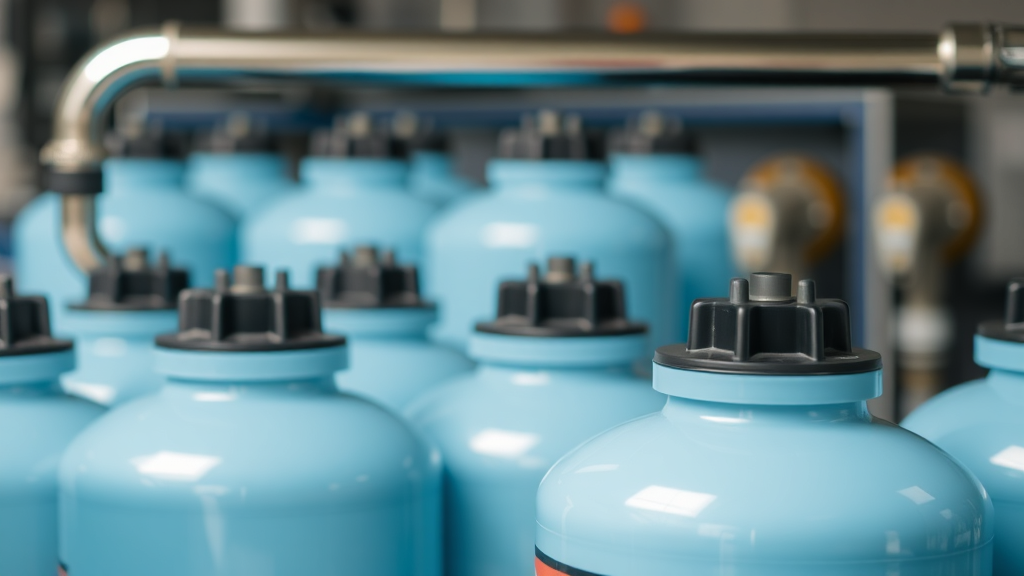
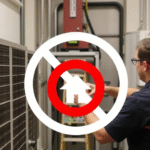
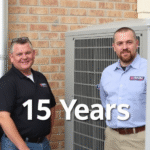
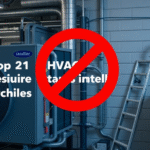
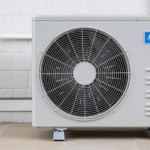

Leave a Reply